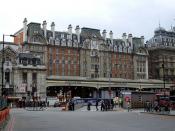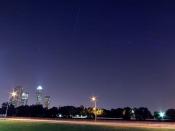Disasters at clubs repeat tragic history
By Big Wolf
Over the decades, from the Cocoanut Grove to the Beverly Hills Supper Club to The Station, the formula for a nightclub disaster is always the same: too many people, too few exits and too little time to escape.
The two calamities last week that killed 118 people in clubs in Chicago and West Warwick, R.I., were the latest in a series of tragedies over a period of 60 years, each of which led to reforms that have made such disasters less likely.
Nevertheless, not impossible. Not if the improved safety rules are not enforced or observed. Not if those who inspect, operate and patronize nightclubs act like characters in a Twilight Zone episode, doomed to endlessly learn a painful lesson, forget it and learn it again.
"This could happen anywhere in the United States," says Paul Wertheimer, a crowd safety consultant based in Chicago.
"The problem is lax enforcement of existing safety laws (and) a recklessness of the industry."
The Chicago nightclub where 21 people died early Monday after the use of pepper spray to break up a fight touched off a stampede was open despite a court order. The Rhode Island fire, which killed 97 late
Thursday, was ignited by the illegal use of fireworks during a rock show. The club had passed a safety inspection six weeks ago.
The fire in Rhode Island was the nation is deadliest in a quarter-century and the worst in the history of rock 'n' roll. It surpassed a 1999 stampede at a concert in Minsk, Belarus, that killed 53 people.
At the two clubs last week -- The Station in West Warwick and E2 on Chicago's Near South Side -- "there was no emergency evacuation plan, no emergency planning, no way to manage...



Very easy to read. good!
awsome paper sucks you in.
5 out of 5 people found this comment useful.